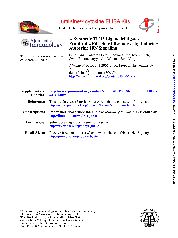摘要
Activation of TLR3 by exogenous microbial ligands or endogenous injury-associated ligands leads to production of type I IFN. Scleroderma patients with progressive skin fibrosis display an IFN-regulated gene signature, implicating TLR3 signaling in the disease. In this study, we show that TLR3 expression was detected on foreskin, adult skin, and lung fibroblasts, and TLR3 levels were significantly elevated in a subset of scleroderma skin biopsies. In explanted skin and lung fibroblasts, the synthetic TLR3 ligand polyinosinic-polycytidylic acid (poly(I: C)), a dsRNA analog, caused dose-and time-dependent stimulation of IFN-beta production and generation of an IFN-response gene signature that was accompanied by substantial downregulation of collagen and a-smooth muscle actin gene expression. Furthermore, poly(I: C) abrogated TGF-beta-induced fibrotic responses and blocked canonical Smad signaling via upregulation of inhibitory Smad7. Surprisingly, the inhibitory effects of poly(I: C) in fibroblasts were independent of TLR3 and were mediated by the cytosolic receptors retinoic acid-inducible gene 1 and melanoma differentiation-associated gene 5, and involved signaling via the IFN receptor. Taken together, these results demonstrate that induction of a fibroblast IFN response gene signature triggered by dsRNA is associated with potent TLR3-independent anti-fibrotic effects. The characteristic IFN response gene signature seen in scleroderma lesions might therefore signify a tissue-autonomous protective attempt to restrict fibroblast activation during injury.
- 出版日期2013-9-15
- 单位西北大学
